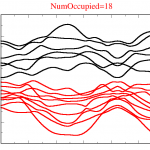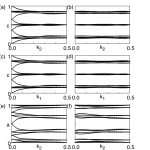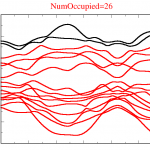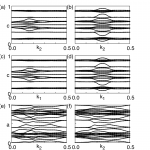The difference between E_fermi and NumOccupied
(1) Different software packages have different conventions of whether setting the Fermi level to zero in the tight-binding Hamiltonian wannier90_hr.dat or not. For example, VASP doesn’t but Wien2k does. In order to compatible with different DFT codes, you need to set E_FERMI tag in the wt.in so that the Fermi level of the energy bands obtained with WannierTools is zero.If you use VASP, you can take the Fermi level from the OUTCAR file. If you use Wien2k, please set it to zero. By the way, if you are confused with this tag, you can set it to zero and compare the energy band with the DFT one. Then you will know how to set it properly. E_Fermi will only shift the energy bands by a constant value.
(2) NumOccupied tag in wt.in is a special integer number to specify how many “occupied” bands. You don’t have to set it unless you want to study the Wannier charge center (Wilson loop), Berry curvature, Berry phase, and Fermi surface. Here is an example:
http://www.wanniertools.com/input.html#system
When you set NumOccupied, please forget about the band’s order from the DFT energy bands.
When we study the topological properties, usually, we separte the energy bands into two sets, one is called “occupied” bands, the other one is “unoccupied” bands. Here the “occupied” and “unoccupied” sometimes even not related to the real occupation defined by the Fermi level. For example, if you want to find Weyl points between the 4th band and the 5th band, then set NumOccupied=4. However, you can also set NumOccupied=5 to find the Weyl points between the 5th band and the 6th band.
Let’s take Bi2Se3 as another example. The Fermi level is located at 0 shown in Fig1 after setting E_FERMI=4.4195 eV. Usually, we will set NumOccupied=18 to study the topological properties between bands [1-18] and bands [19-30] since what happens close to the Fermi level are much interesting. However, if you look at the 26 and 27 bands which are the top of the red bands and the bottom of the black bands respectively, you will find that there is the gap at each k point. Therefore you can also study the Wilson loop between bands [1-26] and bands [27-30] by setting NumOccupied=26. At this time, “NumOccupied” is really nothing related to the occupied bands defined by Fermi level. The corresponding Wilson loop (Wannier charge center) obtained by setting NumOccupied=18/26 is shown in Fig1b/Fig2b.




